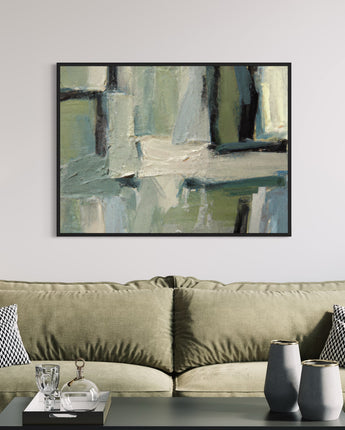Cubism, one of the most influential artistic movements of the early 20th century, fundamentally changed the way we look at art. By deconstructing traditional perspectives and forms, Pablo Picasso and Georges Braque created a new, revolutionary style that influenced all of modern art.
The rise of Cubism
Cubism was born out of a desire to break away from the realistic representations that had dominated art for centuries. Inspired by the work of Paul Cézanne, who explored volume and form in new ways, Picasso and Braque began to experiment in the early 20th century with representing objects and figures from multiple angles simultaneously. This led to what we now call "analytical cubism," in which paintings fragmented motifs into geometric shapes and where colors were often reduced to a muted palette to emphasize the importance of form.
Picasso's 1907 painting Les Demoiselles d'Avignon is often cited as the first Cubist painting. It challenged traditional ideals by presenting bodies at angles that broke with conventional notions of how a human figure should be depicted. This painting marked a new era in art in which the subject was no longer depicted as it "looked" but rather as it could be experienced from multiple perspectives simultaneously.
The development and influence of Cubism
Cubism developed rapidly in the following years. As Picasso and Braque continued to explore the style, they moved from the early Analytical Cubism to Synthetic Cubism, which introduced collage and brighter colors. This shift allowed for an even more dynamic and experimental use of form and texture, further expanding Cubism's influence.
Cubism's impact on the art world was immediate and profound. The movement influenced not only painters but also sculptors, architects, and designers. It inspired a number of other modernist movements, such as Futurism, Dadaism, and Constructivism.
Cubism in today's art
Although Cubism as a movement originated in the early 20th century, its spirit lives on in art today. Modern art continues to draw on Cubist ideas of form, perspective, and diversity of expression. An example of this is the Unspoken Unity painting from our collection. This painting uses Cubist-inspired shapes and green tones to create a sense of depth and complexity.

Immerse yourself in the world of Cubism
Want to learn more about how Cubism and other art styles have influenced modern art? Read our blog post " An Introduction to Abstract Art: History and Development " where we explore how artists like Picasso and Braque paved the way for new ways of thinking and creating.
Explore our collection here: Artiley Canvas Prints

